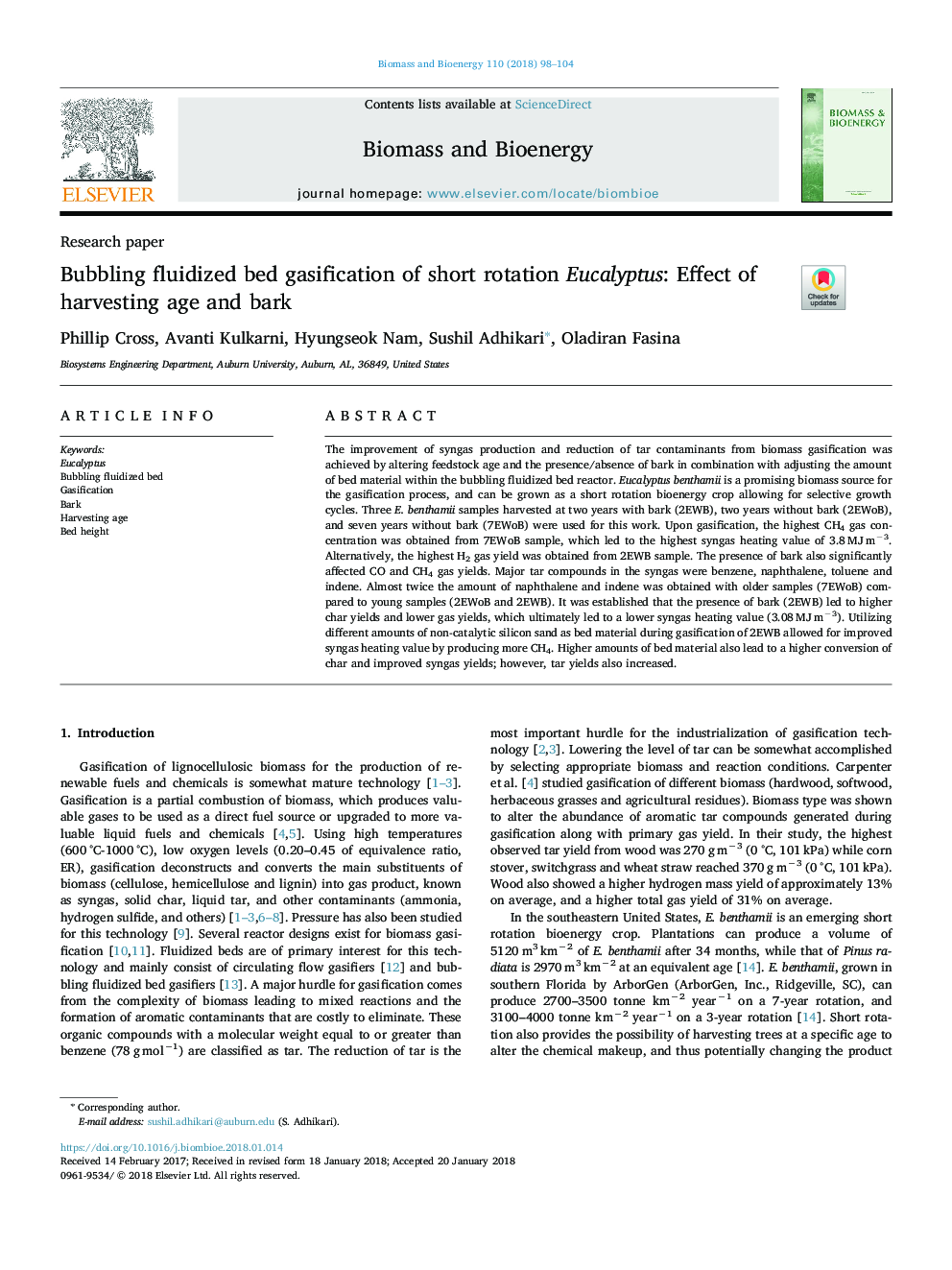| Article ID | Journal | Published Year | Pages | File Type |
|---|---|---|---|---|
| 7063001 | Biomass and Bioenergy | 2018 | 7 Pages |
Abstract
The improvement of syngas production and reduction of tar contaminants from biomass gasification was achieved by altering feedstock age and the presence/absence of bark in combination with adjusting the amount of bed material within the bubbling fluidized bed reactor. Eucalyptus benthamii is a promising biomass source for the gasification process, and can be grown as a short rotation bioenergy crop allowing for selective growth cycles. Three E. benthamii samples harvested at two years with bark (2EWB), two years without bark (2EWoB), and seven years without bark (7EWoB) were used for this work. Upon gasification, the highest CH4 gas concentration was obtained from 7EWoB sample, which led to the highest syngas heating value of 3.8â¯MJâ¯mâ3. Alternatively, the highest H2 gas yield was obtained from 2EWB sample. The presence of bark also significantly affected CO and CH4 gas yields. Major tar compounds in the syngas were benzene, naphthalene, toluene and indene. Almost twice the amount of naphthalene and indene was obtained with older samples (7EWoB) compared to young samples (2EWoB and 2EWB). It was established that the presence of bark (2EWB) led to higher char yields and lower gas yields, which ultimately led to a lower syngas heating value (3.08â¯MJâ¯mâ3). Utilizing different amounts of non-catalytic silicon sand as bed material during gasification of 2EWB allowed for improved syngas heating value by producing more CH4. Higher amounts of bed material also lead to a higher conversion of char and improved syngas yields; however, tar yields also increased.
Related Topics
Physical Sciences and Engineering
Chemical Engineering
Process Chemistry and Technology
Authors
Phillip Cross, Avanti Kulkarni, Hyungseok Nam, Sushil Adhikari, Oladiran Fasina,
